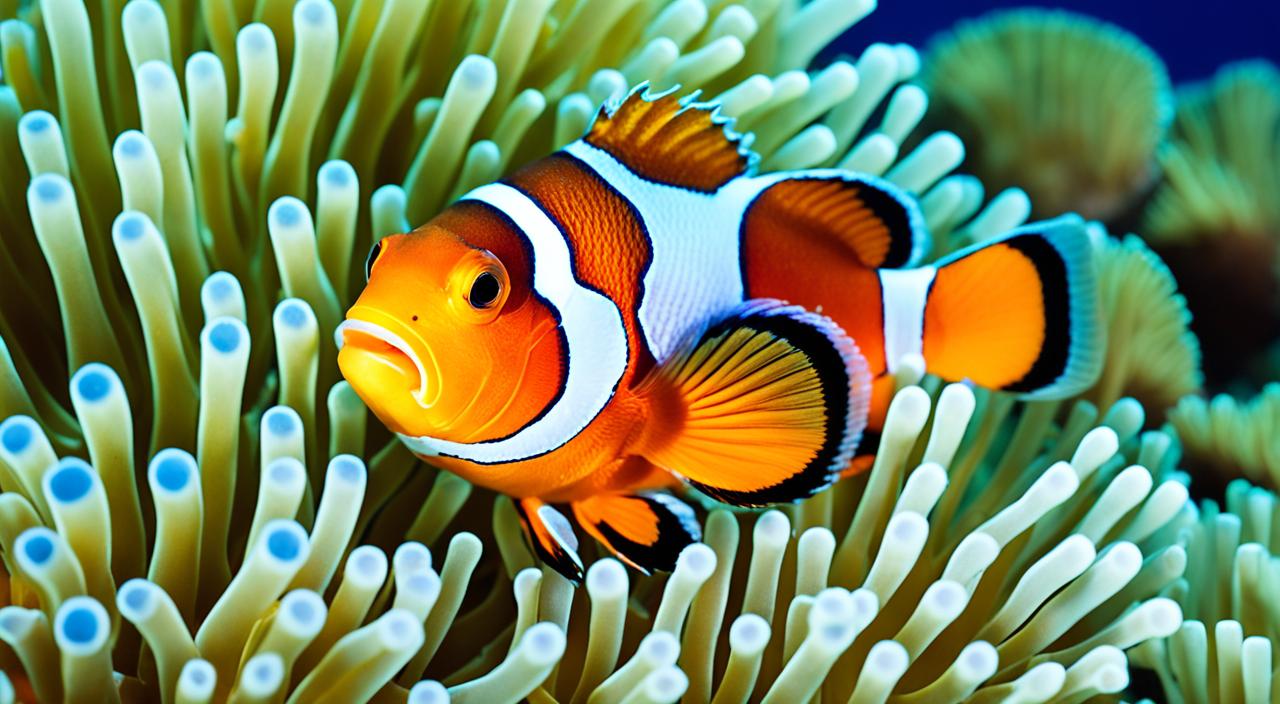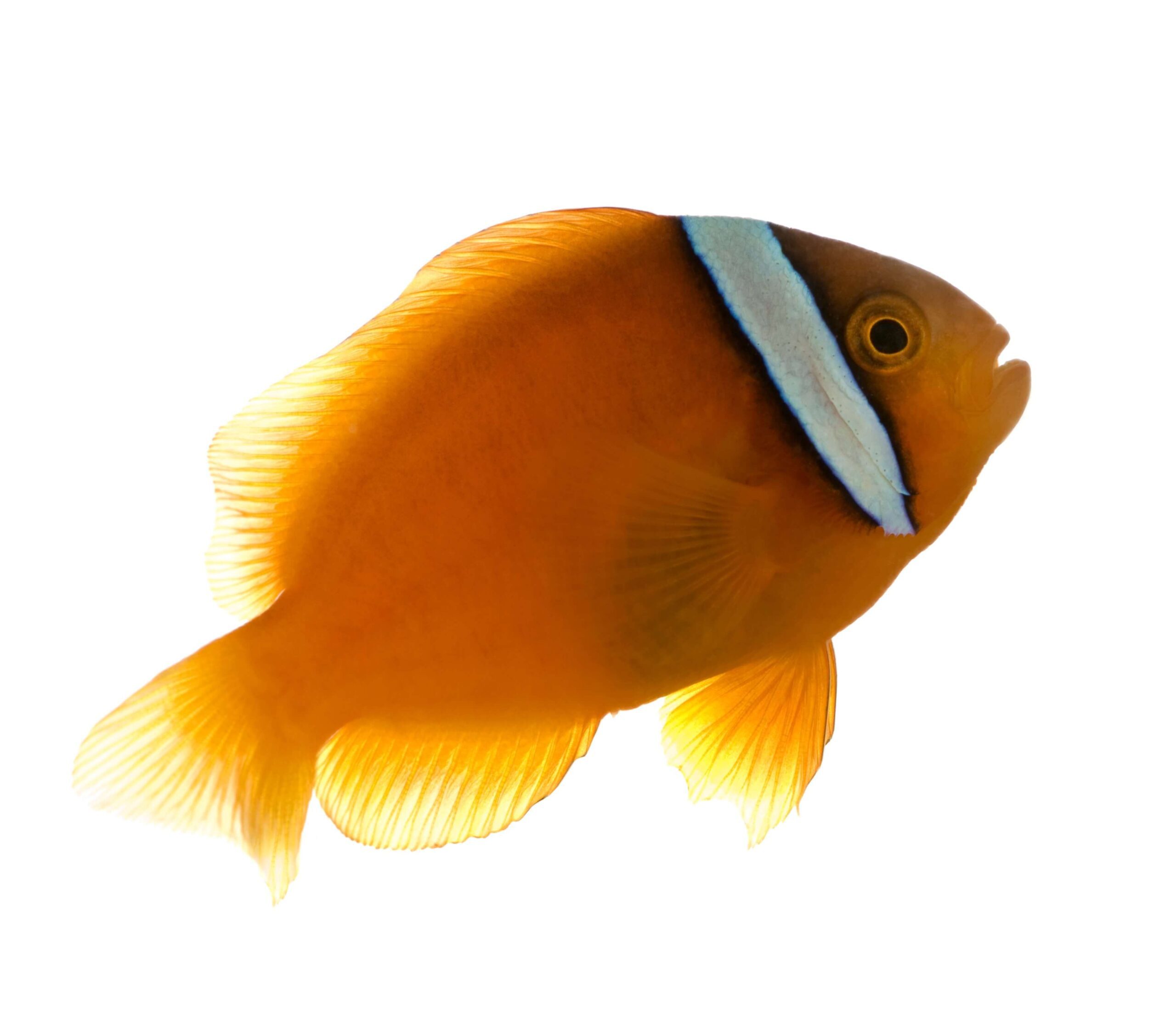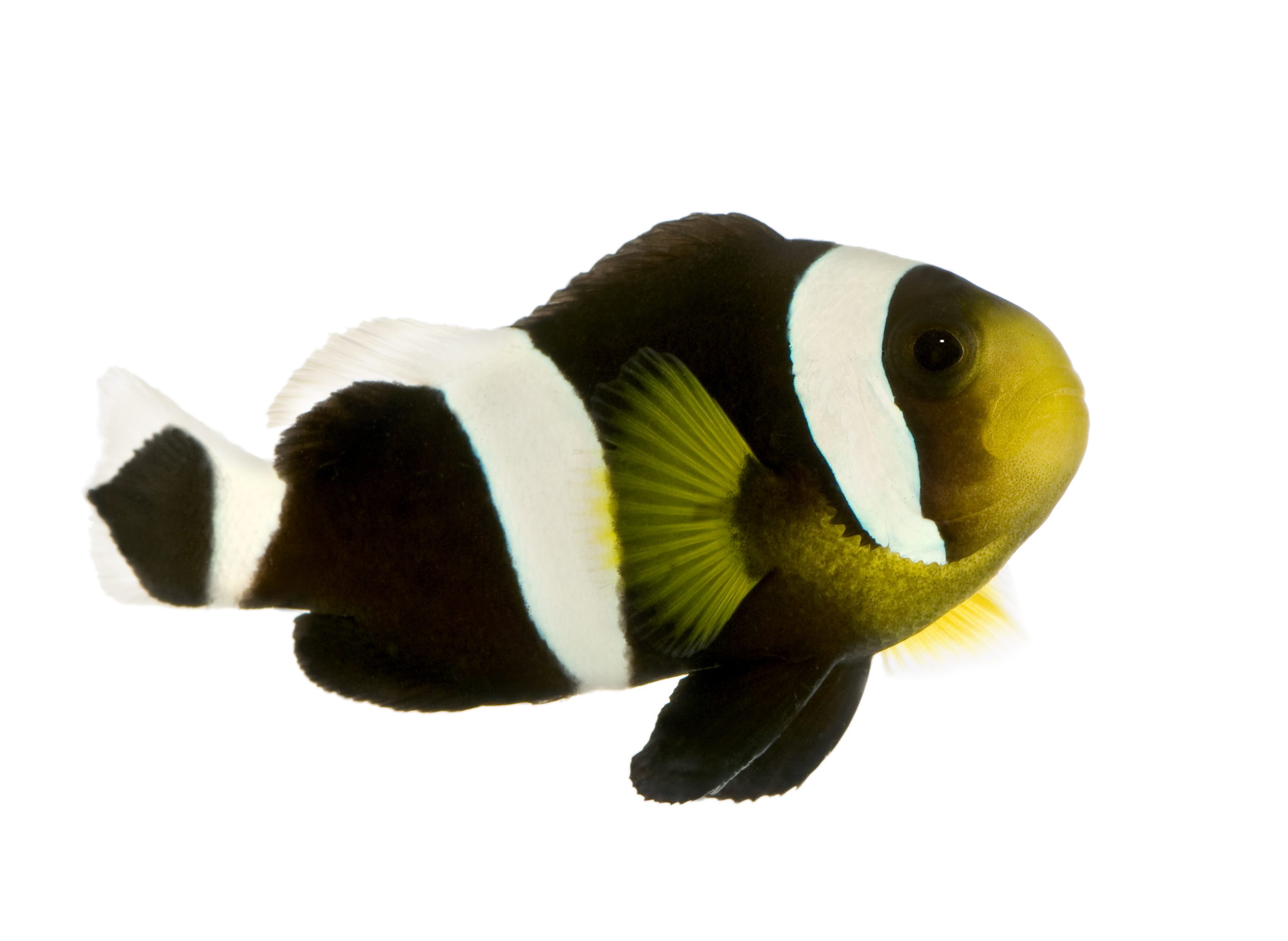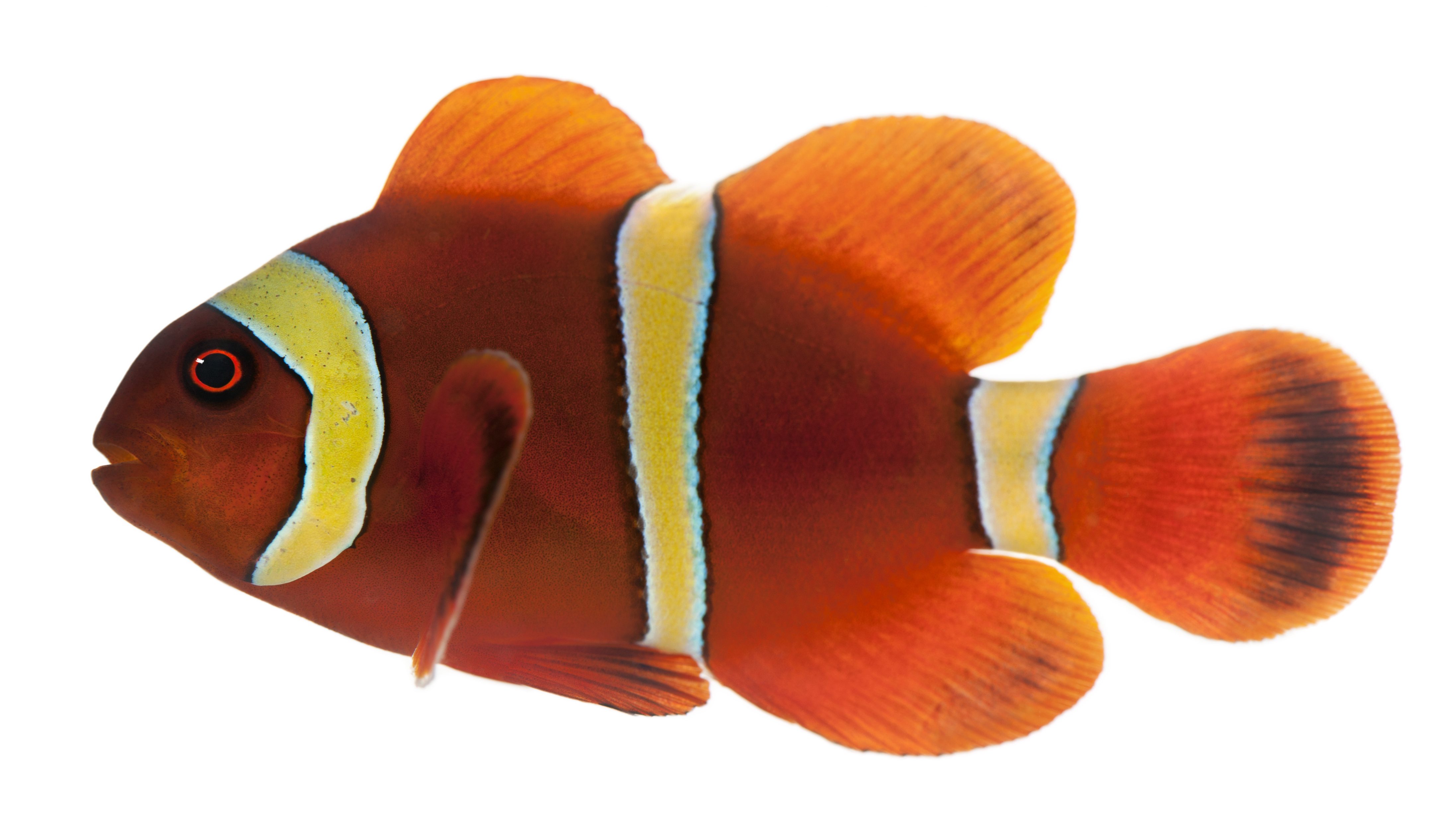The Ocellaris Clownfish, also known as the False Percula Clownfish or Common Clownfish, is a vibrant and widespread species in the aquarium trade. Belonging to the family Pomacentridae, it exhibits distinct colours and playful behaviour, making it a favourite among hobbyists. With its unique appearance, symbiotic relationship with sea anemones, and peaceful nature, the Ocellaris Clownfish is a delightful addition to any community aquarium.
Key Takeaways:
- The Ocellaris Clownfish, also known as the False Percula Clownfish, is a widespread species in the aquarium trade.
- It belongs to the family Pomacentridae and is known for its vibrant colours and playful behaviour.
- Ocellaris Clownfish have a unique appearance with three vertical white stripes outlined in black.
- They form a symbiotic relationship with sea anemones, seeking shelter and protection.
- Ocellaris Clownfish are omnivorous and make great additions to community aquariums.
Introduction
Welcome to the world of the Ocellaris Clownfish! This section will provide you with an introduction and overview of this captivating species. Renowned for its vibrant colours and unique behaviour, the Ocellaris Clownfish has become a popular choice among aquarium enthusiasts. Let’s dive into the fascinating realm of this iconic fish and discover why it has captured the hearts of hobbyists worldwide.
Taxonomy and Classification
This section will delve into the taxonomic classification of the Ocellaris Clownfish. The scientific name of this species is Amphiprion ocellaris. It belongs to the family Pomacentridae, which includes various species of clownfish. Ocellaris Clownfish are closely related to popular species like the Percula Clownfish (Amphiprion percula) and the Tomato Clownfish (Amphiprion frenatus).
Here is the taxonomic hierarchy of the Ocellaris Clownfish:
| Kingdom | Animalia |
|---|---|
| Phylum | Chordata |
| Class | Actinopterygii |
| Order | Perciformes |
| Family | Pomacentridae |
| Genus | Amphiprion |
| Species | Ocellaris |
The taxonomic classification provides insight into the evolutionary lineage and relationships of the Ocellaris Clownfish within the animal kingdom. It helps scientists and enthusiasts understand the species’ biological characteristics and connectivity to other fish species.
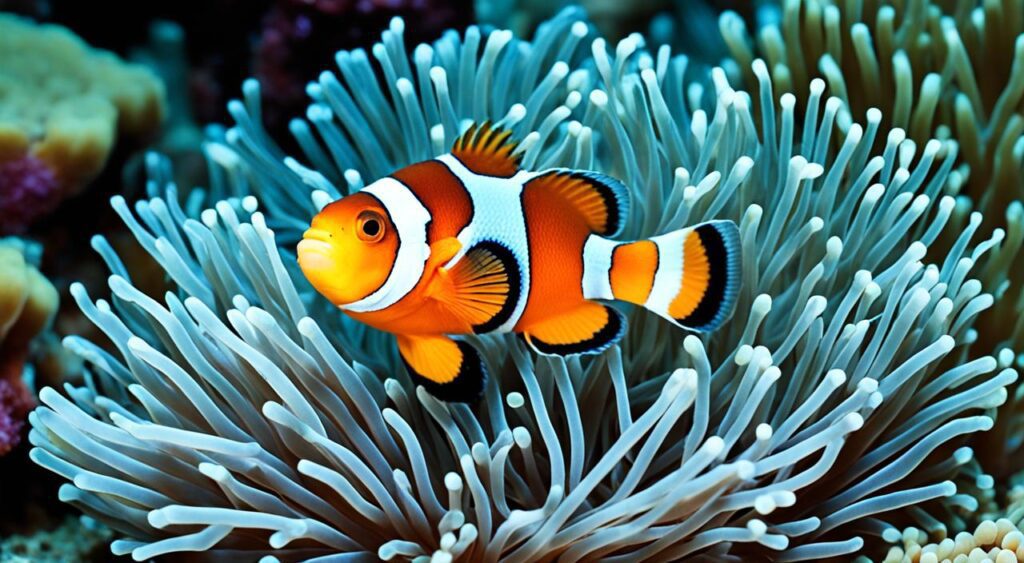
Natural Habitat and Distribution
In this section, we will explore the natural habitat and distribution of the Ocellaris Clownfish. This species is primarily found in coral reefs and sheltered lagoons, where they seek refuge among the intricacies of their surroundings. The Ocellaris Clownfish has a wide geographic range, with populations dispersed across different regions.
One prominent area where the Ocellaris Clownfish can be found is Northwest Australia, known for its vibrant and diverse marine ecosystems. These fish are also prevalent in Southeast Asia, where they thrive in warm tropical waters. The Ryukyu Islands of Japan also provide suitable conditions for the Ocellaris Clownfish to flourish.
The unique characteristics of their natural habitat, characterized by coral reefs and lagoons, contribute to the successful adaptation and survival of the Ocellaris Clownfish. Their distribution across various regions highlights their ability to endure different environments and ecosystems.
Physical Description and Characteristics
Regarding the physical appearance, the Ocellaris Clownfish is a visually striking species. The colour variations of this clownfish range from vibrant orange to rich black, with distinct white bands adorning its body. Its most recognizable feature is the three vertical white stripes outlined in black, which run across its sides.
This species has a sleek and compact body shape, with a single dorsal fin on its back. The caudal fin, also known as the tail fin, is rounded. The pectoral fins, located on the sides of the body, provide the Ocellaris Clownfish with excellent maneuverability in the water.
As for size, adult Ocellaris Clownfish typically reach an average length of 3 to 4 inches (7.5 to 10 centimetres). The females are usually more significant than the males, showcasing sexual dimorphism.
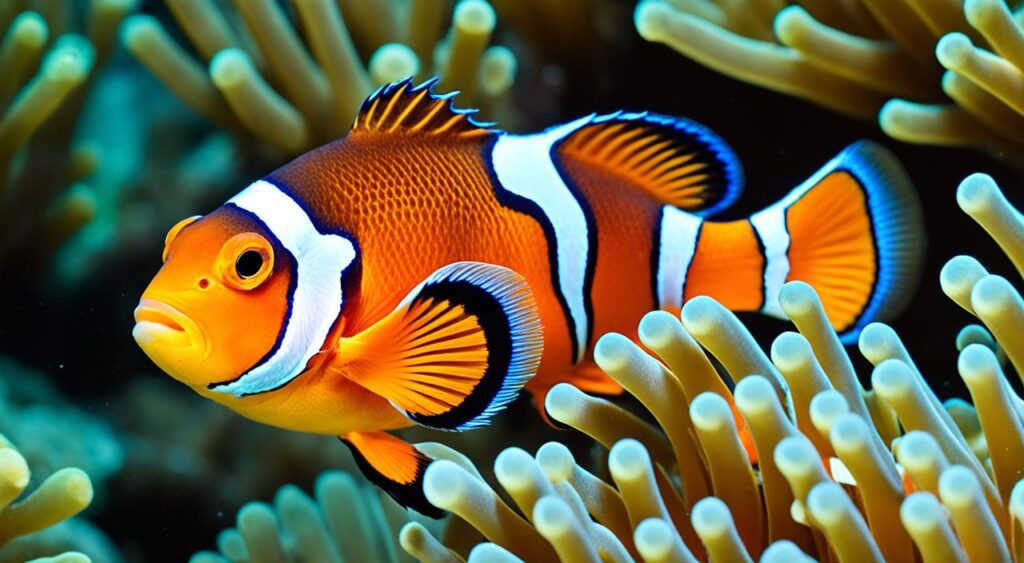
Aside from their physical appearance, Ocellaris Clownfish display several other exciting characteristics. They exhibit a playful and energetic nature, darting in and out of hiding places within their aquarium. Additionally, they have developed a mutually beneficial relationship with sea anemones, seeking shelter and protection from their stinging tentacles. This unique behaviour further enhances the appeal of the Ocellaris Clownfish to marine aquarium enthusiasts.
Behaviour and Temperament
The behaviour of Ocellaris Clownfish is fascinating to observe. They are diurnal creatures, meaning they are most active during the day. During this time, they engage in various activities, such as feeding, exploring their surroundings, and interacting with tank mates. Ocellaris Clownfish are generally peaceful fish and exhibit friendly behaviour towards other species. However, they can sometimes display territorial behaviour, especially when protecting their eggs or territory within the aquarium.
One of the most exciting aspects of Ocellaris Clownfish behavior is their unique relationship with sea anemones. These fish have a symbiotic association with certain species of sea anemones. They seek shelter and protection among the stinging tentacles of their host anemone, which provides them with safety from potential predators. This behavior is crucial for the survival of Ocellaris Clownfish in the wild. It is also observed in aquariums, where these fish often bond with their chosen sea anemone.
Regarding their temperament, Ocellaris Clownfish are generally docile and peaceful, making them suitable for community aquariums. They can coexist with various tank mates, including other clownfish species, smaller reef fish, and peaceful invertebrates. However, it is essential to consider the size of the aquarium and provide ample hiding spots to prevent potential conflicts.
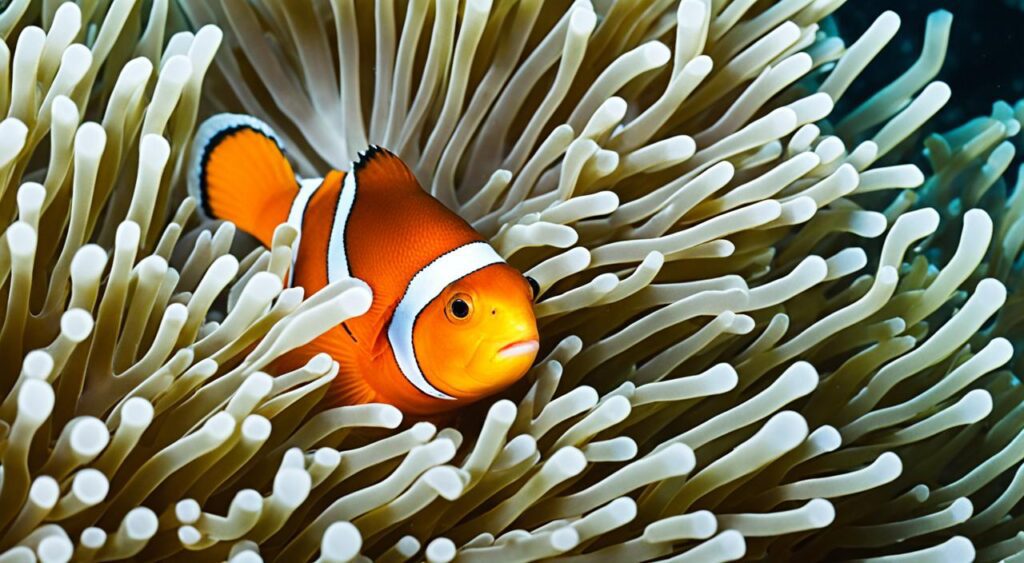
Observing the behavior and temperament of Ocellaris Clownfish can be a rewarding experience for aquarium enthusiasts. Their social nature and unique symbiotic relationship with sea anemones make them an intriguing addition to any marine aquarium.
Aquarium Requirements
Ideal Tank Size and Layout
Creating the right tank environment is crucial for the well-being of Ocellaris Clownfish. To ensure their comfort and provide ample space for swimming, it is recommended to have a tank size of at least 20 gallons. A larger tank, such as a 30-gallon or 40-gallon aquarium, will allow for even more swimming room and provide opportunities to replicate a natural reef environment.
Regarding the tank layout, incorporating live rock structures and coral replicas can create hiding places and mimic their natural habitat. Designing caves and crevices will enable Ocellaris Clownfish to establish territories and seek shelter when needed.
Water Parameters
| Water Parameter | Ideal Range |
|---|---|
| Temperature | 76-82°F (24-28°C) |
| pH | 8.1-8.4 |
| Salinity | 1.020-1.025 |
Maintaining proper water parameters is essential for the health and vitality of Ocellaris Clownfish. They prefer their water temperature to be within the range of 76-82°F (24-28°C). It is essential to monitor and adjust the pH levels, aiming for a range of 8.1-8.4, to ensure the proper environmental conditions. Maintaining a salinity level between 1.020 and 1.025 is recommended, as it replicates the natural saltwater environment in which Ocellaris Clownfish thrive.
Suitable Tank Mates and Potential Conflicts
Ocellaris Clownfish are generally compatible with various tank mates, but it is essential to choose species with similar water parameter requirements and non-aggressive behaviours. Some suitable tank mates include other peaceful fish species like Gobies, Damsels, and Anthias. Avoid pairing them with aggressive or territorial fish that may cause stress or harm to the clownfish.
Compatibility with Live Plants and Invertebrates
Ocellaris Clownfish can coexist with live plants and invertebrates in the aquarium, provided that the plants and invertebrates are suitable for a marine environment. Some compatible live plants include macroalgae, sea grasses, and algae species. As for invertebrates, Ocellaris Clownfish are usually compatible with coral species, cleaner shrimp, and hermit crabs. Researching the specific needs and behaviours of the plants and invertebrates is essential to ensure a harmonious and safe tank environment.
Diet and Feeding
To maintain the health and well-being of Ocellaris Clownfish, it is crucial to provide them with a balanced and nutritious diet. These fish have omnivorous feeding habits and require a mix of both plant-based and animal-based foods to meet their dietary needs.
Dietary Preferences
Ocellaris Clownfish have a varied diet that includes algae, copepods, and zooplankton. These foods provide them with essential nutrients, vitamins, and minerals. Algae, such as seaweed and spirulina, are rich in plant-based proteins and fibre, while copepods and zooplankton are excellent sources of animal-based proteins.
Recommended Foods and Feeding Schedule
To ensure a well-rounded diet, offering a combination of commercial fish food, frozen or live foods, and occasional treats is recommended. High-quality pellets and flakes specially formulated for clownfish should be the staple diet. These provide a balanced blend of proteins, vitamins, and minerals.
Supplement their diet with frozen or live foods such as brine, mysis shrimp, and enriched copepods. These live or frozen foods resemble the natural prey of Ocellaris Clownfish and promote their natural feeding behavior. Additionally, offering treats like chopped seafood or small pieces of fresh fruits may add further variety to their diet.
As for the feeding schedule, providing small portions of food multiple times a day is advisable. This mimics their feeding habits in the wild and ensures that they receive enough nutrition throughout the day. Avoid overfeeding to prevent health issues and maintain water quality in the aquarium.
Tips on Ensuring a Balanced and Nutritious Diet
Here are a few tips to help you ensure a balanced and nutritious diet for your Ocellaris Clownfish:
- Monitor their feeding behaviour and adjust the portion sizes accordingly. It’s important not to overfeed or underfeed them.
- Offer a variety of foods to prevent monotony and provide a broad range of nutrients.
- Rotate their diet between commercial fish food, frozen or live foods, and occasional treats to provide them with diverse nutrients.
- Consider adding supplements or vitamin-rich foods to their diet to ensure they receive all the necessary nutrients.
- Observe their response to different types of food and make adjustments based on their preferences.
Breeding and Reproduction
I will now discuss the fascinating breeding and reproduction behaviours of Ocellaris Clownfish. These clownfish are known for their unique breeding behavior as protandrous hermaphrodites. This means that they can change their gender during their lifetime. In a clownfish group, the most significant individual is typically the female, while the second largest individual becomes the male. If the female dies or disappears, the male will change gender and take her place.
To successfully breed Ocellaris Clownfish in captivity, it is essential to create the right conditions. A well-maintained aquarium with stable water parameters is essential. The temperature should be between 75-80°F (24-27°C), and the salinity levels should be around 1.020-1.025. Providing a suitable substrate for them to lay their eggs is crucial. Many breeders use artificial clay pots or PVC pipes, mimicking the natural nesting sites of Ocellaris Clownfish.
Once the eggs are laid, it is essential to provide proper care to ensure the survival of the fry. The male clownfish guards and tends to the eggs, fanning them with his fins to maintain optimal oxygen flow. The eggs typically hatch in about 7-10 days, depending on temperature and other factors. Once hatched, the fry should be transferred to a separate rearing tank with appropriate food, such as freshly hatched brine shrimp or specially formulated fry food.
Breeding Ocellaris Clownfish in captivity can present some challenges. It requires careful planning, patience, and experience. Factors such as water quality, tank size, and the availability of compatible breeding pairs can impact breeding success. Additionally, the survival rate of fry can vary, and it may be necessary to provide additional support, such as specialized feeding and water parameters, to ensure their health and growth.
Overall, the breeding and reproduction of Ocellaris Clownfish is a rewarding and fascinating endeavour. Breeding these charismatic fish can contribute to their conservation and give aquarium enthusiasts a deeper understanding of their remarkable life cycle and behaviours.
FAQ
What is the scientific name of the Ocellaris Clownfish?
The scientific name of the Ocellaris Clownfish is Amphiprion ocellaris.
Why are Ocellaris Clownfish popular in the aquarium trade?
Ocellaris Clownfish are popular in the aquarium trade due to their vibrant colors and playful behavior.
What is the distinctive appearance of Ocellaris Clownfish?
Ocellaris Clownfish have three vertical white stripes outlined in black, with variations in color ranging from orange to black with white bands.
What is the symbiotic relationship between Ocellaris Clownfish and sea anemones?
Ocellaris Clownfish have a symbiotic relationship with sea anemones, seeking shelter and protection within their tentacles.
What is the breeding behavior of Ocellaris Clownfish?
Ocellaris Clownfish are protandrous hermaphrodites, meaning they start their lives as males and can change their gender to females later on.
Are Ocellaris Clownfish peaceful in community aquariums?
Yes, Ocellaris Clownfish are generally peaceful and can make great additions to community aquariums.
What are the ideal tank size and layout for Ocellaris Clownfish?
Ocellaris Clownfish require a tank size of at least 20 gallons and prefer a setup with plenty of hiding places and live rock.
What are the suitable water parameters for Ocellaris Clownfish?
Ocellaris Clownfish prefer a water temperature of 75-82°F, pH level of 8.1-8.4, and salinity of 1.020-1.025.
What are suitable tank mates for Ocellaris Clownfish?
Ocellaris Clownfish can be kept with other peaceful fish species, such as gobies, cardinalfish, and certain blennies.
Can Ocellaris Clownfish be kept with live plants and invertebrates?
Yes, Ocellaris Clownfish are generally compatible with live plants and invertebrates.
What is the diet of Ocellaris Clownfish?
Ocellaris Clownfish are omnivorous and feed on a variety of foods, including algae, copepods, and zooplankton.
How often should Ocellaris Clownfish be fed?
Ocellaris Clownfish should be fed a small amount of food 2-3 times a day.
How can I ensure a balanced and nutritious diet for Ocellaris Clownfish?
You can provide a balanced diet for Ocellaris Clownfish by offering a variety of foods, including commercial pellets, frozen foods, and live foods.
What is the breeding behavior of Ocellaris Clownfish?
Ocellaris Clownfish lay eggs, which are cared for by the male until they hatch into fry.
What are the challenges in breeding Ocellaris Clownfish in captivity?
Breeding Ocellaris Clownfish in captivity can be challenging due to the required conditions for successful breeding and the need for specialized care of eggs and fry.

